Nature is a powerful thing. It’s all around us and has both beautiful and deadly aspects to it. While animals, oceans, and the sky are all wonders to be looked at with amazement, they should also be respected for their ability to provide signs that can be either trivial or down-right life-saving.
From birds flying South before a storm, to cracked snow before an avalanche, to lakes nearby volcanos, nature has its way of sending us signals that can either be taken seriously or ignored. And it comes down to make a life or death decision in many cases. As you will see in this article, there are natural disasters, some being the worst in American history, that could have been foreseen and unnecessary death and disaster could have been prevented.
See which of nature’s signs you’ve already witnessed in real life and which you have yet to see. And remember, it’s these signs that can potentially save your life one day.
You’re Not in Kansas Anymore
It may seem like a no-brainer, but some people may see a huge wall cloud and be amazed, even thrilled, and want to stick around to see what’s going to happen next. But this is a sight to run away from, not move towards. Wall clouds sit lower than the rest of the impending thunderstorm and can even get up to five miles long in length!
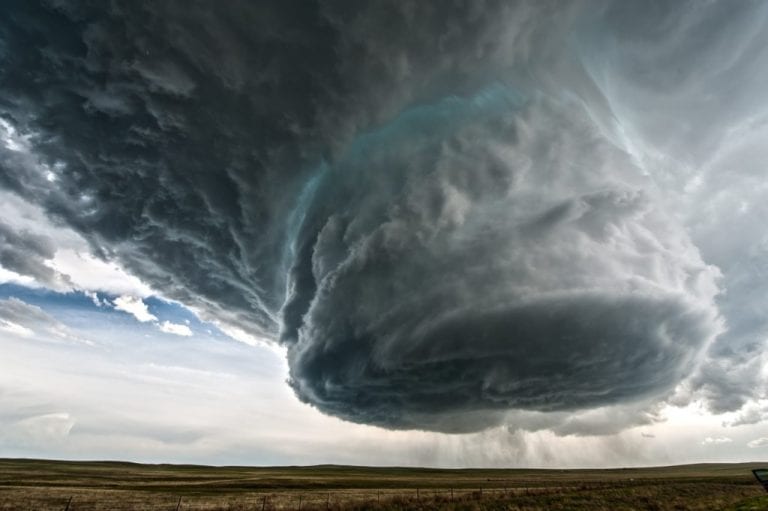
Advertisements
Source: Colt Forney
How does it even happen? Well, quickly rising air makes the pressure drop below the storm, and thus forms the wall cloud. But be warned: it’s dangerous because if the cloud is rotating, it could produce a destructive tornado.
Watch Out for Ocean Levels Dropping
If you’re walking along the beach and you notice that the water starts receding, you may be in trouble. Another sign is if the coral reefs are uncovered. If this is what you see, it’s best to hit high ground as soon as possible. Why? A tsunami is probably on the way.
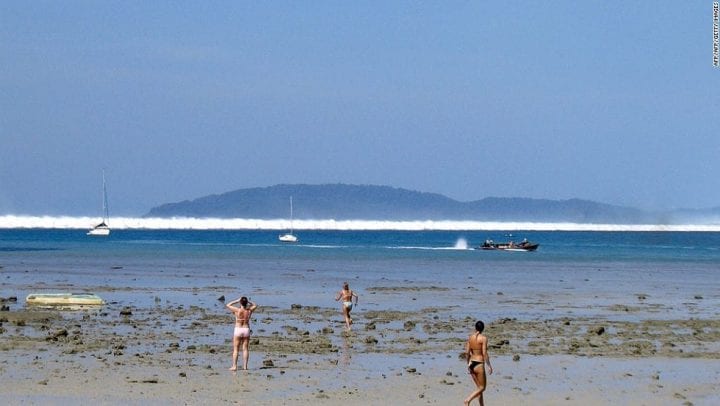
Source: CNN
Tsunamis typically occur when there’s an earthquake underwater, which ends up displacing the water above it. And if that happens, waves can move as 500 miles per hour across the ocean (the same speed as a jet airplane).
Ever seen J-shaped trees? They’re cool, but they signal something dangerous!
Beware of J-Shaped Trees
Here’s an example of how striking can have a double entendre. Nature can be both eye-catching as well as dangerous at the same time. Have you ever been hiking in the woods and saw trees bent into the shape of a letter J? Well, if you survived to tell it, then you escaped a scary situation because these types of trees can be a sign of an upcoming landslide.
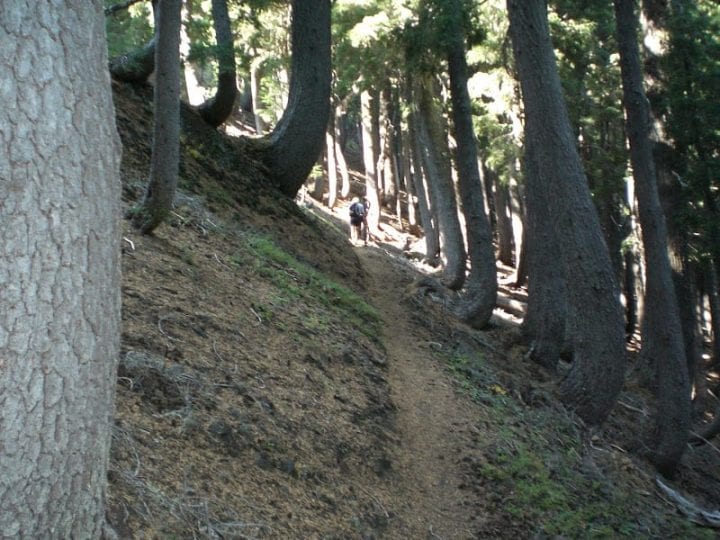
Source: MTBR Forums
The trees get this shape due to the ground moving very slowly, and so the trees grow in this odd form. An additional sign of a potential landslide is cracking in the ground, which can be found in the sidewalk, street, or dirt. Be reminded that landslides occur on slopes, so if you’re in a flat area you’re probably in the green.
Rodents Running? There’s a Reason…
People from as far back as 373 BC Greece, have reported that animals like rats, snakes, and insects flee their homes days before a large earthquake hits. But it’s anecdotal evidence. Scientists are unsure of what it is exactly that the animals are detecting and if they’re actually sensing anything at all. It’s also hard to study their behavior right before an earthquake happens.
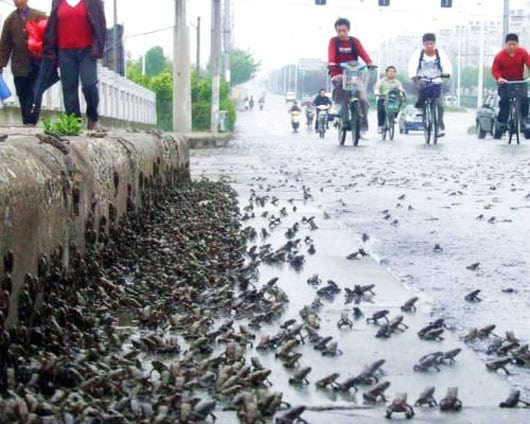
Source: China Daily Mail
It is known, however, that animals can sense earthquakes a few seconds before humans because they feel the initial small waves that we’re not able to detect. While this could be somewhat helpful, it’s not enough of a warning to get out in time.
Speaking of animals running, the next warning sign is when animals run towards you!
Animals Running Towards You
Animals may also run towards you, not away from you. So if you see birds and mammals flying or running toward you, there might be a wildfire behind them. Amazingly, some animals, like amphibians, will actually stay in the fire, burrowing themselves underground to escape it.
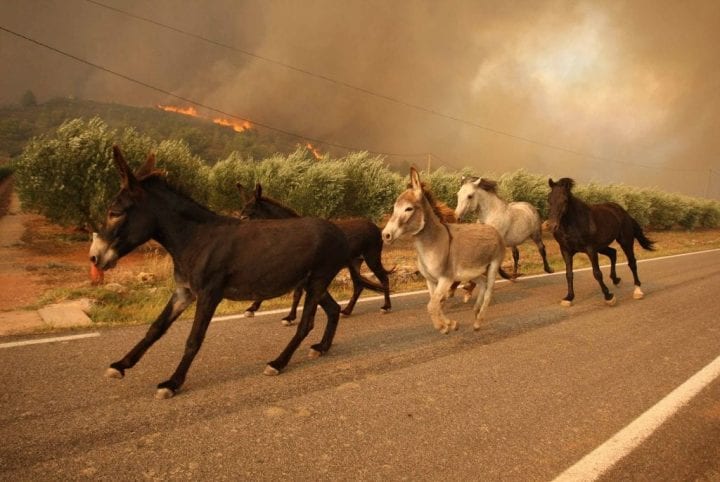
Source: Lluís Serrat
But most animals will run as fast as they can. Apart from the obvious signs of smoke, seeing animals run away together is a pretty big sign that something scary is going on that we aren’t yet aware of. So if you see something like this, you might want to run with them.
Hair Standing on End = Lightning!
Lightning strikes may seem completely rare but you may be surprised to hear that more people die every year from lightning than unprovoked shark attacks. Since the 1940s, annual deaths have been declining and it’s because people are more aware of the danger. So listen up!
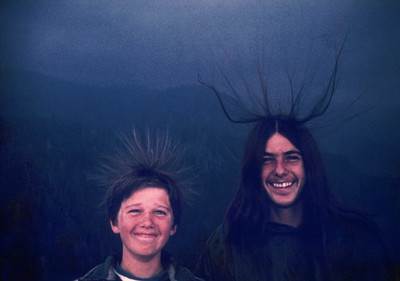
Source: Mary McQuilken
If your hair starts standing on end and your jewelry is buzzing, lightning is probably about to strike right around you. So don’t wait a second, and get to shelter immediately. If you can’t, you should crouch low on the ground to make yourself a small target. The key is to touch the ground as little as possible, squatting on the balls of your feet.
Fish on the Beach is a Deadly Sign
Seeing one dead animal on the shore may be a sad thing to see, but it doesn’t warrant running away in danger. Seeing a whole bunch of dead fish, however, is another story. And it means the water could be toxic. “Red tide” is something that collects in the water near the beach and it happens all over the world.
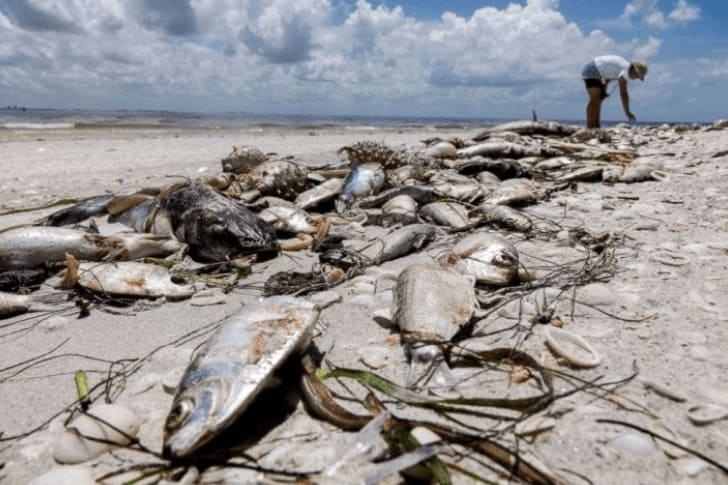
Source: Shutterstock
When the water is full of toxic algae (more than normal), it’s called a red tide. It can make the water reddish brown, but sometimes the water’s color doesn’t even change. That’s why seeing dead fish on the shore is sometimes the only warning sign you’re going to get. If you do go in the water without noticing, you might have respiratory irritation like coughing or itchy throat. Just wash yourself off thoroughly and you should be fine.
Wondering how to know if an avalanche is coming? See the next page…
Don’t Stay in Caves If It’s A Full Moon
Sure, sitting in a cave can be an experience of a lifetime, especially if it involves a romantic rendezvous with a special someone! Just try not to enter a cave when it’s a full moon. Why? Because you might not be able to get out!
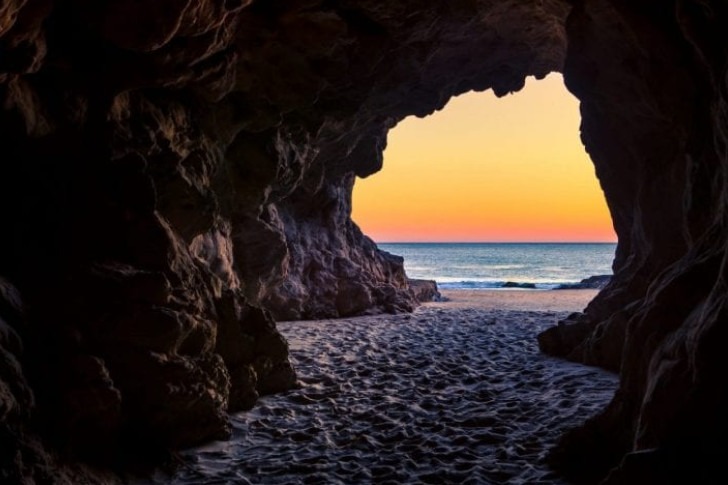
Source: Gary Kavanagh/iStock
Full moons mean the tide is lower than normal, which means the cave is more accessible to the water and can flood easily. So if you’re in a cave and you notice it’s also a full moon, get out quickly and head up higher.
Did you know that dogs can sense danger too?
Dogs Can Sense Bodily Harm
Dogs have a way of sensing things that we humans are just not up to par with. If your dog is sniffing or licking a particular part of your body more than usual, or even barking at you mysteriously, you should probably look into it. A dog’s nose is so powerful that they can even sniff out symptoms of cancer.

Source: CNN
Scientists believe that it’s the organic compounds coming from cancer that the dogs are sensing and have proved they can distinguish between a cancer patient’s urine and cancer-free patient’s urine. There have been lots of cases where a dog alerted their owner of growing cancer.
Get Out of the Water if You See Square Waves
This photo may seem like it’s PhotoShopped, but this is an actual natural phenomenon. It occurs when two wave systems run into each other. One of the wave systems continued despite the shifting of wind which creates what’s called a “cross sea.” And as interesting as they look, cross seas are highly dangerous for boats, surfers, and swimmers.
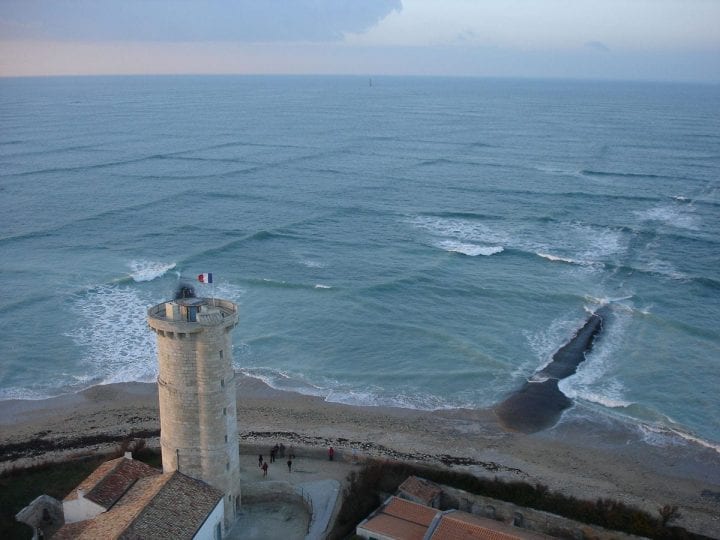
Source: Wikipedia
Underneath these cross seas is a really strong current that can carry you out to sea, despite all your efforts. The water also makes it difficult for boats to navigate, and many ships have been wrecked by cross seas. The Isle of Rhe in France and also New Zealand are known for them.
Head to Shelter if You See Bands in the Sky
While cloud watching can be a fun pass time and seeing which shapes or figures the clouds resemble, be mindful of certain patterns. If you see long streaks of rotating clouds stretching into a thunderstorm, find shelter. And it’s wise to stay clear of windows and because a tornado might soon form.
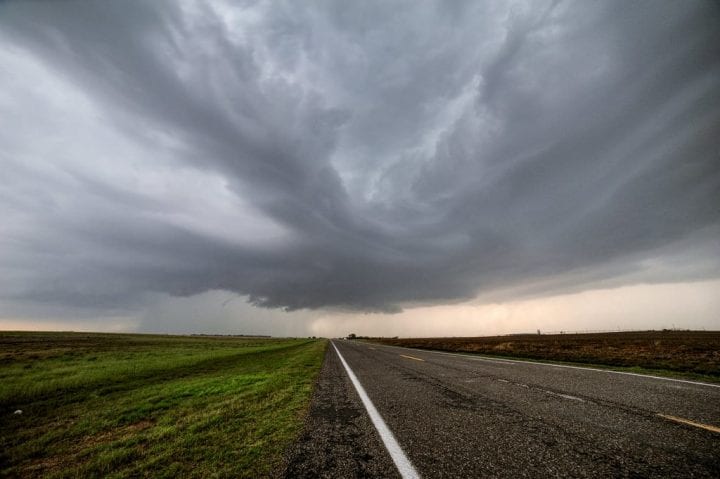
Source: Kirby Wright/Flickr
These streaks of clouds are called “inflow bands” and they indicate the storm is drawing in low-level air from a distance. These bands usually stretch to the south of the storm and are low in the sky. Storm chasers look out for them to know when a tornado is going to form so they can warn people in the area, as well as chase the storm.
Ssssss…rattlesnakes have their method of warning you first! See how and why next…
Red Skies Can Predict the Weather
There’s an old saying that goes: “Red sky at night, sailor’s delight. Red sky in the morning, sailor’s warning.” And like most old sayings, there is some truth. In this case, the red color comes from the sunlight reflecting off the water vapor and dust particles in the air.

Source: Canada Goose Photography
Because weather generally moves from west to east, the timing of a red sky can partially predict the weather that’s coming. Red skies at night means good weather is coming in because it means there’s a high-pressure system. But a red sunrise can indicate that the good weather is passing and a low-pressure system, a storm, is heading in from the west.
Volcanoes Have Their Own Early Signals
Volcanoes can be a thrilling place to visit, but they can be just as deadly. So how can you really know if one is going to erupt soon? Chances are, there’s going to be mini earthquakes under the volcano leading up to it. Volcanos also usually swell and release more heat and gas before an eruption. But these signs are hard for the average person to observe.
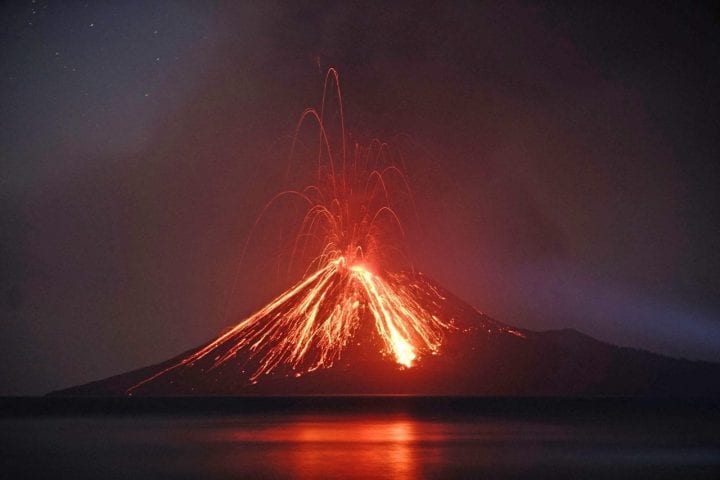
Source: NBC News
The good news is that there are volcanologists who continuously monitor these signals with radar satellites and other detectors. The fact of the matter is some of nature’s warning signs are just too difficult to notice without technology.
A Wall of Dust is a Warning to Find Cover
Dust storms happen to be pretty common in the Southwest United States. Drivers may suddenly see a cloud of dust coming their way, which can be really dangerous. Dust storms can cause major car accidents, so it’s best to steer clear of the other cars. Get away from the road, turn on your emergency brake, and turn off your car’s lights.
Advertisements

Source: BigRedCurlyGuy/iStock
The reason for turning off your lights when off the road is so that you don’t direct other drivers toward you if you were to still have your lights on. If you can’t get off the road, keep your lights on and drive slowly, with your hand ready on the horn.
A Natural Pool with Beautiful Colors? Don’t Go In…
You might be in Yellowstone National Park and see a beautifully colored hot springs pool, thinking it would be cool to go in. But don’t. Going in could be deadly since the temperatures can reach 200 degrees Fahrenheit or more (a hot tub is usually 105 degrees or under).
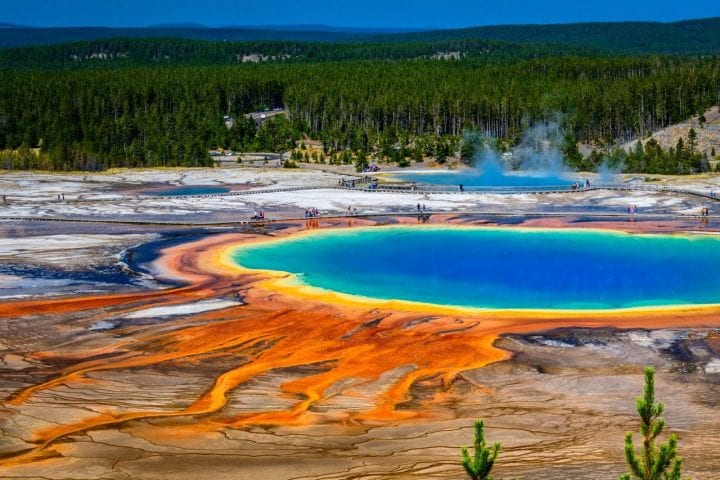
Source: tiny-al/iStock
Bacteria thrive in extremely hot environments which give these deadly pools their striking colors. And each color comes from different bacteria. In Yellowstone National Park, there are signs and paths that tell you whether an area is safe or dangerous.
Next – bear signs. Know what to look for!
Ecosystem Canaries Can Warn Scientists of an Ecosystem’s Collapse
Coal miners used to have canaries check for poisonous gasses underground, which showed scientists that canaries can be quite useful. They started using “ecosystem canaries” to check the health of an ecosystem. Apparently, the species are not actual canaries, and maybe not even birds at all. Scientists noticed that the species would start dying even before the ecosystem collapsed.
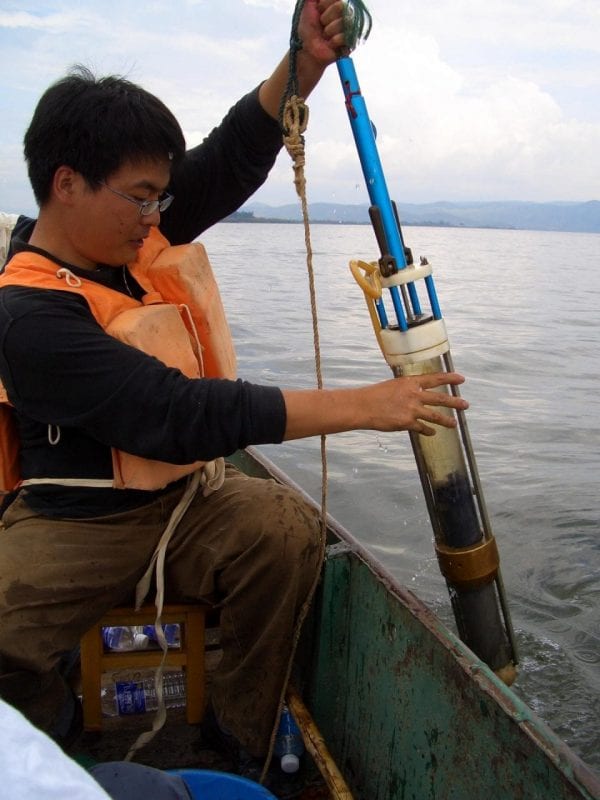
Source: Phys.org
These “canaries” reproduce slowly and aren’t great at competing for resources. They aren’t the most crucial parts of the ecosystem, but they can be a signal of its health. Scientists are hoping to identify this species and monitor them before it’s too late.
See how plants and animals can signify climate change next…
Plants and Animals Can Indicate Climate Change
The shifting of animal and plant ranges is one of the first signs of climate change. A range, by the way, is the habitat where a species naturally lives, based on the temperature, rainfall, humidity, and other natural factors. But when the climate changes, animals and plants move out of their normal ranges.
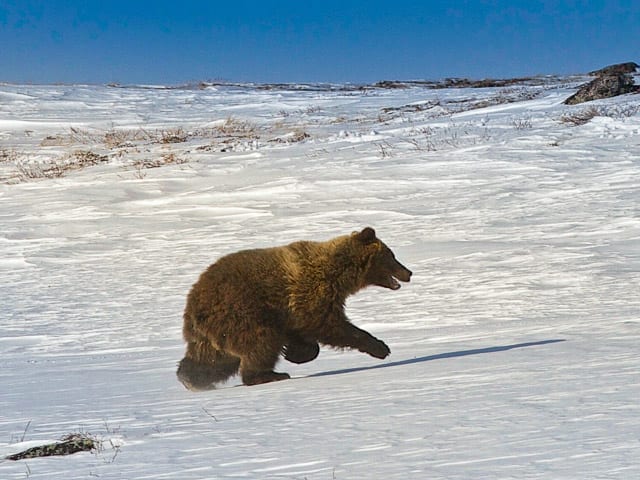
Source: Canada North Outfitting
Lately, grizzly bears are moving north and heading into polar bear territory. Same with moose and snowshoe hares, who are leaving because the bush that’s growing taller during warmer temperatures. Scientists estimate that half of all living species are moving out of their normal ranges.
Non-Stop Water
If it’s been raining non-stop and can hear a roar of rushing water, get as high up as possible because a flash flood is probably about to happen. Did you know that in the US, flash floods are the second most dangerous form of severe weather?
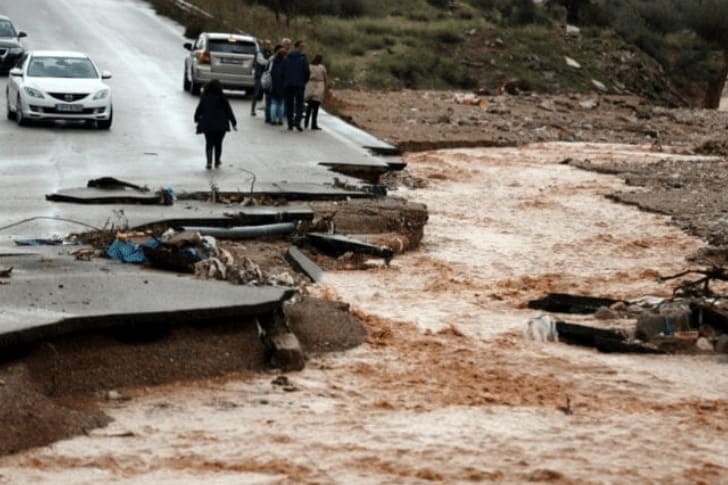
Source: Parktraceapartments
Flash floods can come out of nowhere very quickly and the last thing you want is to be caught in one. They’re unbelievably powerful, they can roll boulders, take trees out of their roots, take outbuildings, and even drag bridges!
Leave it to the Birds
If you see these birds, the golden-winged warblers, fly away all at once, it can be a sign that a tornado is on the way. Scientists discovered this in 2014 when they were following a group of these birds in Tennessee and they suddenly all got up and flew away.
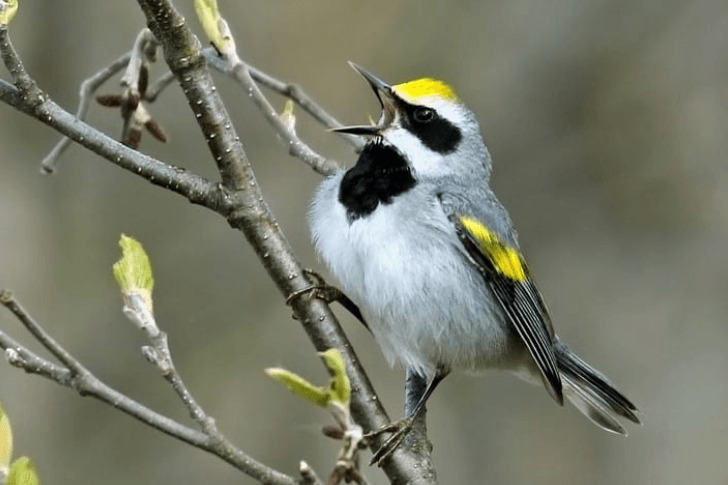
Source: All About Birds
After checking their geolocators, they saw that the birds flew all the way down to Florida. And only a few days later, the birds came back to Tennessee, completing a 900-mile round trip. The scientists believe the reasons is due to them hearing low-frequency infrasound coming from storms nearby.
Ever seen rings around the moon? See what they indicate next…
The Sound of the Sea
The ocean can produce all kinds of sounds, most of the time having quite a relaxing effect on people. But the ocean can also produce one of the scariest sounds you’ll ever hear. And that’s when it sounds like a roar or a train.
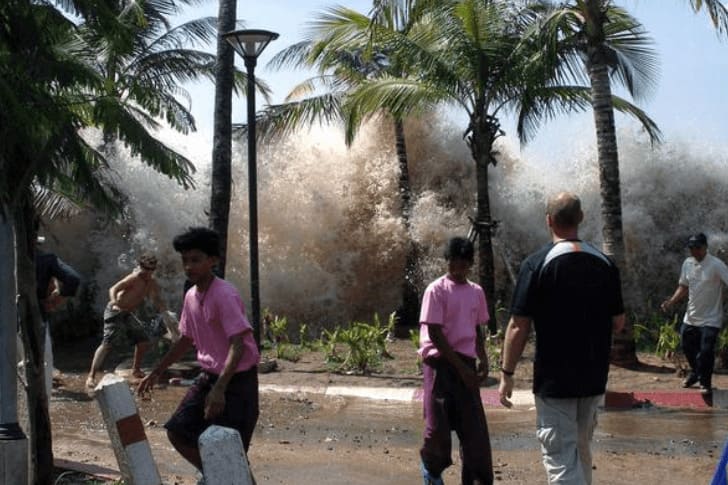
Source: David Rydevik
If you hear this, a tsunami might be coming at you. It may not come as a surprise to know that tsunamis are one of the most deadly attacks that nature can spring on us. So if you have any warning whatsoever, take it seriously.
Lakes Near Volcanoes Are Not The Safest
Compare a lake near a volcano to a shaken can of soda that’s about to explode. If a lake is located in a very hot environment that never cools and is also around a volcano, it’s risky business.
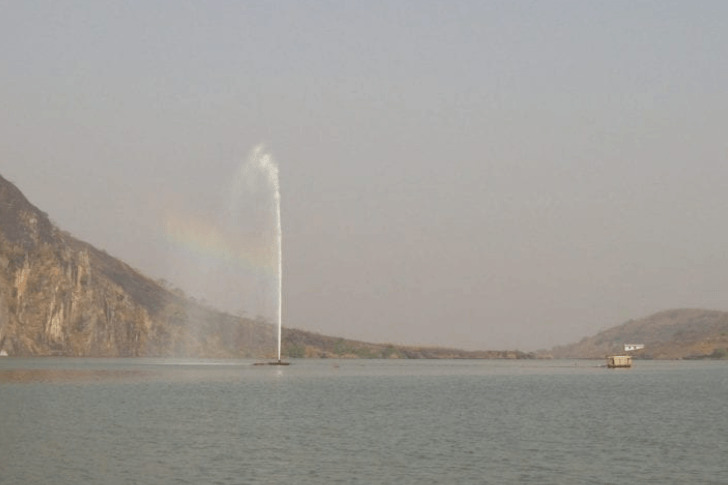
Source: Wikimedia Commons
The magma underground might be spewing carbon dioxide into the bottom of the lakes, making the pressure rise and about to blow. And if the climate is hot all year, the lake never processes this and the gas never gets an opportunity to leave. So if you’re in a lake next to a volcano, be aware.
The eruption of Mt. Tarawera
One early morning in June 1886, New Zealand got the worst wakeup call in its history. Mount Tarawera erupted. Triggered by a series of earthquakes, the active volcano suddenly exploded, spewing up molten rock and ash as high as 6.2 miles up.
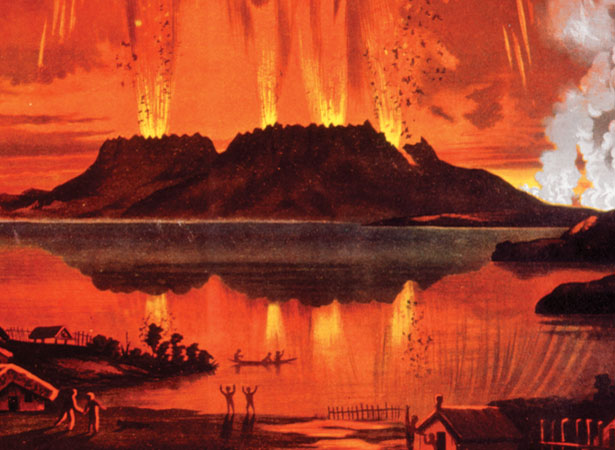
Source: Fupping
The death toll was reported between 120 and 150, which back then was a real terror to the local population. Apparently, there were so many warnings of the impending volcanic activity weeks prior to the explosion. But then again, hindsight is 20/20.
The Indian Tsunami and Earthquake Disaster
Not only volcanos are predictable. The horrific tsunami that killed more than 230,000 people and injured 500,000, with a whopping 1.7 million left homeless was a disaster in which its warning signs were ignored. The tsunami that happened on December 26, 2004, after a 9.2-magnitude earthquake affected 14 countries in Asia and eastern and southern Africa.
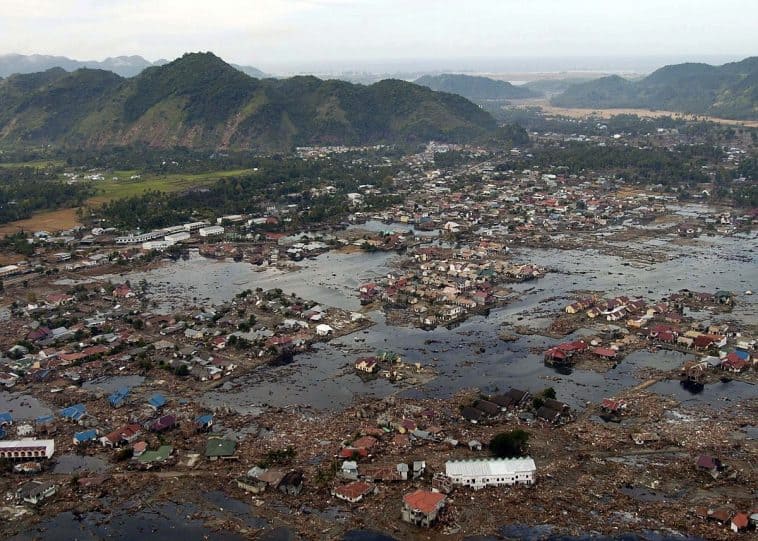
Source: Fupping
The magnitude of the entire disaster is made worse when you find out that seven years’ worth of warnings were ignored by countries who feared that such a reality would hit the tourism industry too hard. What a mistake…
Do you know of the Hunza River landslide in Pakistan? It could have been averted…
1989 San Francisco Earthquake
26 years after the Loma Pietra earthquake, a 7.1 magnitude earthquake shook Northern California in October 1989. “The little big one” (the name of the quake) occurred when Game Three of the World Series started. Fortunately, this meant a lot of people in the areas that were hit the hardest by the earthquake were inside watching baseball.
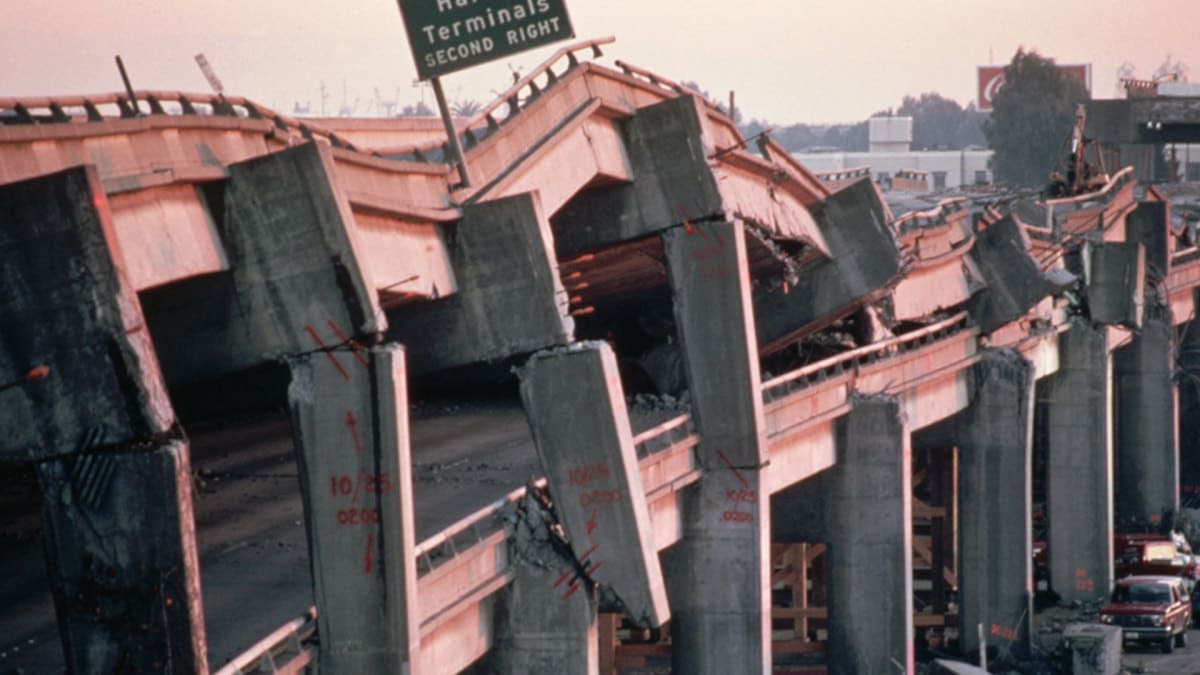
Source: history.com
But 63 people died in the earthquake, and most of them were in the collapse of the 1.25-mile-long section of the double-decked Cypress Freeway. Officials knew the freeway couldn’t withstand an earthquake that strong. Engineers reported that state highway officials had “failed to take adequate steps to strengthen roadway overpasses” after a 1971 earthquake collapsed, killing 58 people in the San Fernando Valley.
2010 Haiti Earthquake
In 2010, the last country that needed a catastrophic earthquake was the tiny island of Haiti. The underdeveloped country never had the right infrastructure and they didn’t have any building codes. And when disaster struck on that day, geologists were less than surprised as they could see it coming for years.
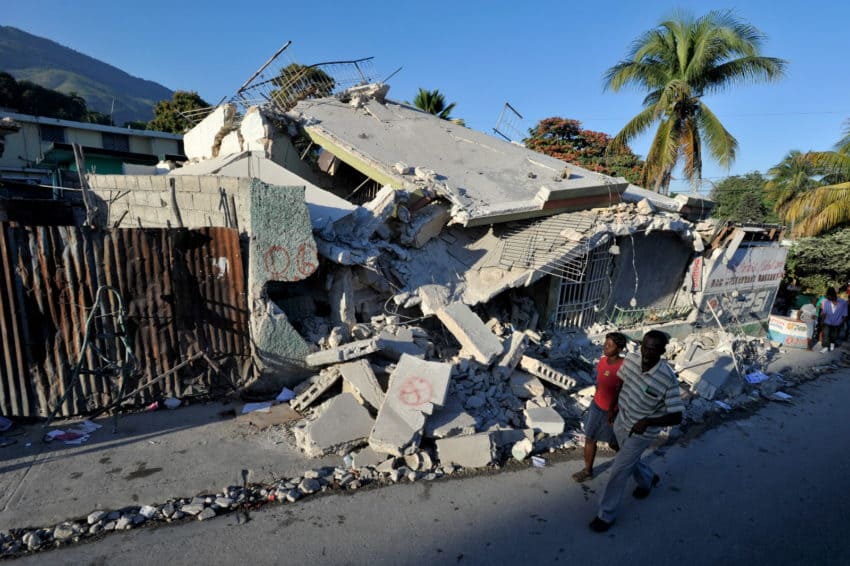
Source: World Vision
One of the world’s largest fault lines runs very close to the Haitian capital Port-Au-Prince. The line had been edging along at seven millimeters a year for two and a half centuries! So it was only a matter of time until an earthquake would hit.
And something could have been done…
The Dust Bowl of the Great Depression
While many natural disasters happen within hours or days, even months, this one endured almost a decade! The plague that became known as the Dust Bowl played out over the whole decade of the 1930s, in the heart of America.
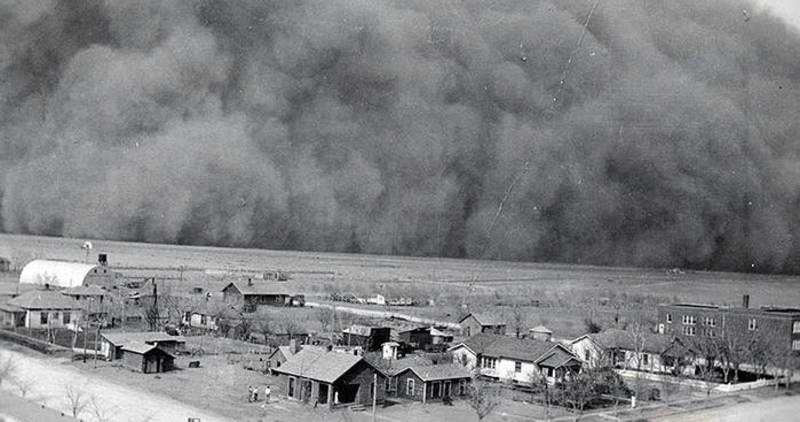
Source: All That’s Interesting
In that decade, thousands of East Coast residents began heading west to seek relief from the hardships of the Great Depression. The years before the dirty 30s were characterized by abnormally heavy rains. And even on some maps from the late 1800s, the area is referred to as the “Great American Desert”.
A New Meaning to the Dirty Thirties
The rains had created heavy grass and plant growth, giving new settlers the impression that the area was suitable for farming. They tried farming, but vast stretches of the land left only dry dirt and dust. And when the wind kicked up, the dirt and dust was deadly.
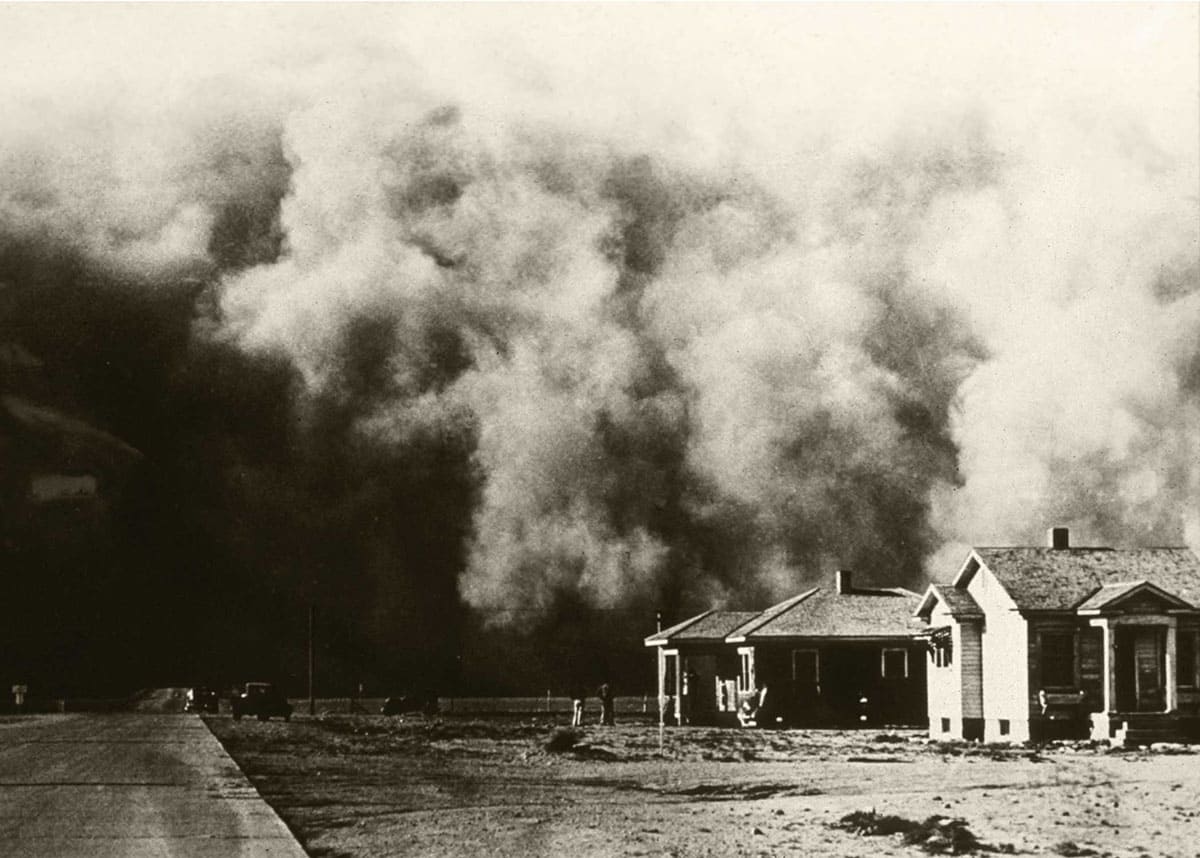
Source: Pinterest
The nearly ten-year drought with major dust storms choked the life out of hundreds of square miles of land. Many died of starvation and illness due to respiratory conditions. The drought eventually ended in the Fall of 1939, just in time for World War II.
Mistakes Were Made
Ray Seed, the head of one of the teams, said: “People didn’t die here because the storm was bigger than the system could handle…People died because mistakes were made and because safety was exchanged for efficiency and reduced costs.”
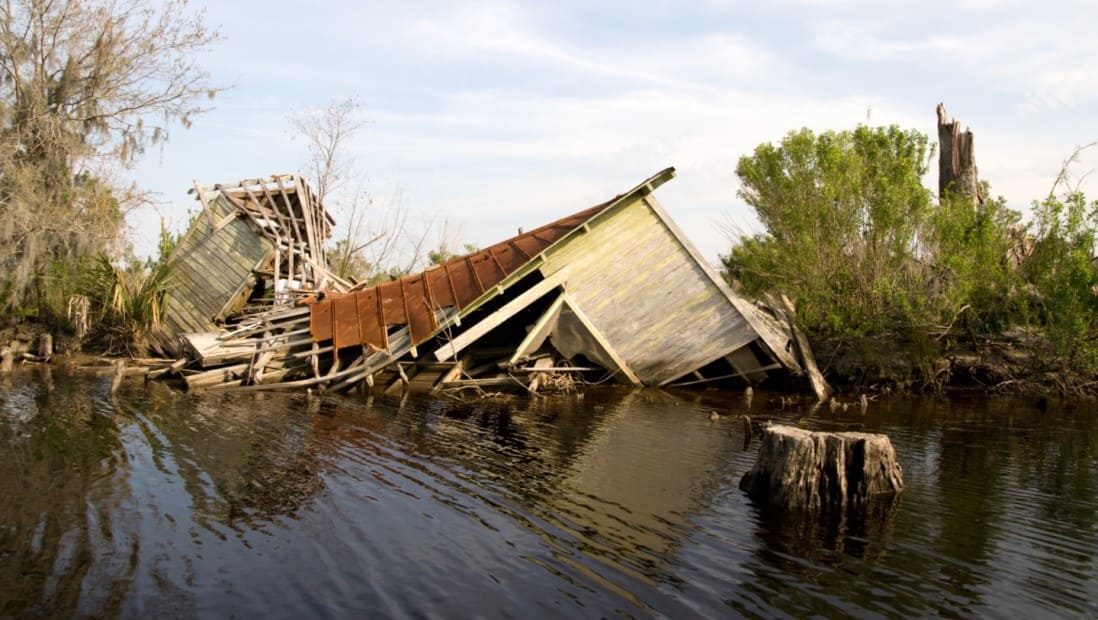
Advertisements
Source: Do Something
In addition to the unnecessary loss of life, Katrina is the priciest natural disaster in United States history. Recovery costs are estimated at 108 billion dollars—and counting.
